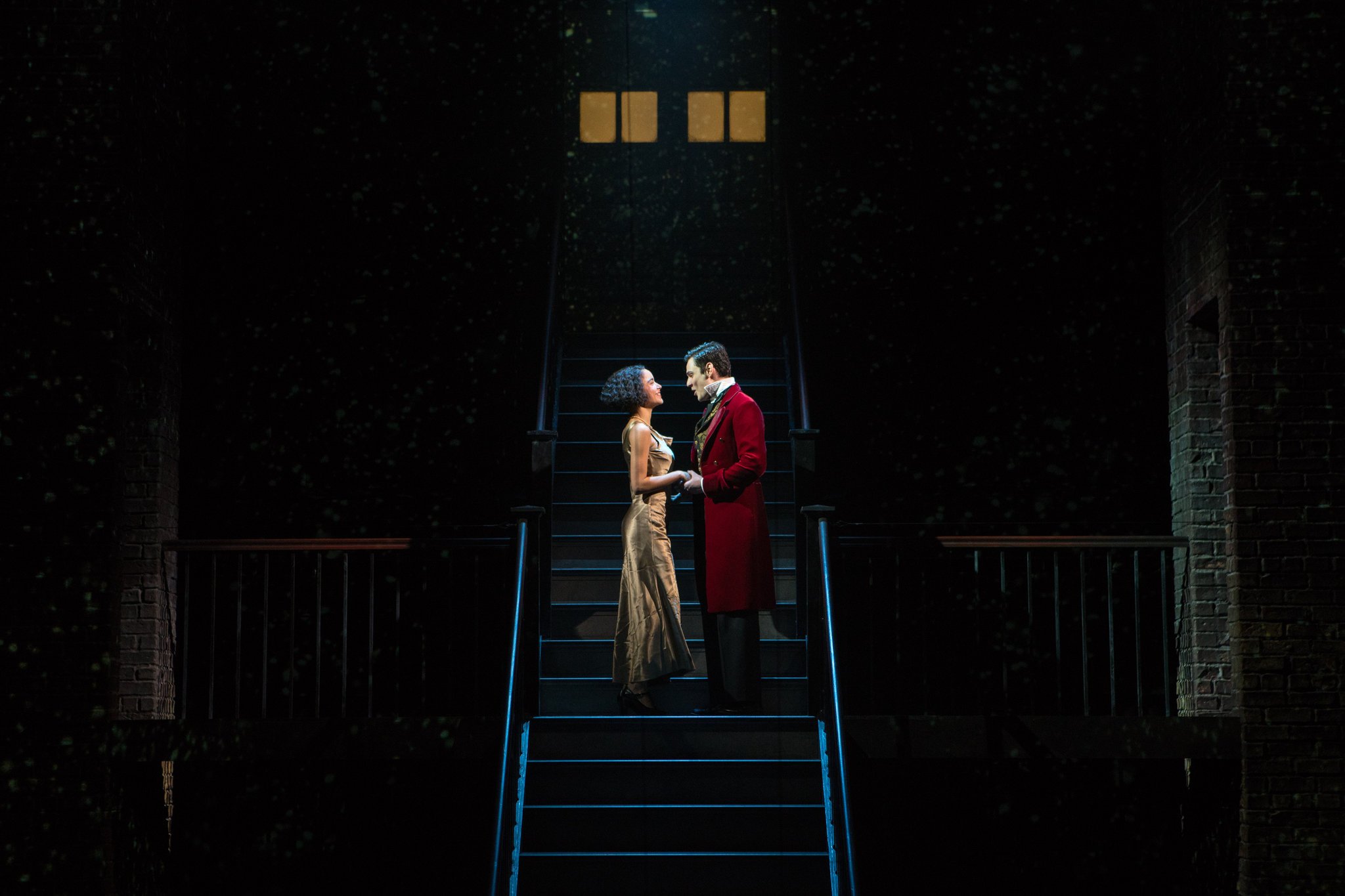Adrienne Kennedy’s new play at Theater For a New Audience is a 45-minute experience, unlike anything you have ever witnessed before. It is somewhere between a wonderful dream and a terrifying nightmare, a reverie and a fantasia, a set of monologues and a lyric poem; it is equal parts tragic and beautiful. Kennedy’s plays are known for being fractured, cyclical, symbolic, expressionistic, and above all, confronting issues of race. This play is no exception: “He Brought Her Heart Back in a Box” is set in 1941 Georgia and tells the doomed love story of a rich white man and a mixed-race black woman. It has been said that Kennedy does not do linear stories, but this play is perhaps her most straightforward. The piece begins with the pair talking together–maybe even meeting for the first time, although they know of each other–and things quickly turn romantic as they make plans to get married in New York and eventually move to Paris. The rest of the play exists as two separate but simultaneous monologues, written as letters to each other.
Although the “plot” moves forward, the narrative drives continually further and further into the past, as both Kay (Juliana Canfield) and Chris (Tom Pecinka) work through and confront memories about their parents. Kay tries to piece together the fractured narrative of her mother, who some claim committed suicide after giving birth to her and others say was murdered by her white lover. Chris struggles with the legacy of his racist father who helped plan, organize, and implement the segregation of the town in such an efficient way that he even gains the attention (and friendship) of soon-to-be Nazis. Their family narratives are fragmented, disjointed, unclear, and at times even contradictory. They explore the question: how do we live with our history? In many ways, the letters Kay and Chris write to each other are acts of excavation and exorcism, an attempt to come to terms with the past they have inherited and figure out who they are.
Other than the first scene, the entire play is structured as parallel monologues. For a “love story,” the lovers barely speak to, touch, or interact with each other. Normally, this is not a recipe for a successful play, but Kennedy manages to defy all the odds. Canfield and Pecinka do an incredible job with their material, bringing the longing and pain of their characters to life with passion and nuance, even if this means developing a romance from opposite sides of the stage.
The work, which in most simplistic terms is a “play,” is filled with music and others texts, most notably Noel Coward’s operetta “Bittersweet” and Christopher Marlowe’s “The Massacre at Paris.” Just like everything else in the piece, these songs and bits of intertext repeatedly float in and out, complicating the supposed linearity. It is not only the inclusion of music and an Elizabethan drama, however, that give this play an operatic feeling; the scope, scale, and stakes of the work are what make it resemble a grand opera. Seemingly, in a two-person, 45-minute play this would be impossible, and yet somehow Kennedy, the director Evan Yionoulis, and the two actors make it seem more like a Greek tragedy than a one-act play.
The defining piece of the stage is a massive, multi-floor staircase that splits the playing space and seems to define every movement of the actors. This simple yet evocative set is designed by Christopher Barreca. The play begins with Chris walking up them to see Kay; it ends with Kay running up them to see Chris–and of course, there is a dramatic descent at one point. The idea of a staircase in a drama would usually be benign, but in this operatic dreamscape it conjures up a certain mythos, reminding us of legendary stories of lovers and underworlds like Orpheus and Eurydice, Aeneas and Dido, or Dante’s Inferno. Quickly, Chris and Kay become more than just two people from a small Southern town. Quickly their story becomes something bigger, an important political exploration about the racist history of America that we all have inherited and must contend with every day.
Just like Chris and Kay, all Americans live in a nation that was based on slavery, segregation, and racialized violence. Like Chris and Kay, we must all work through that complicated, nightmarish past. We must recognize it, not forget it, but more importantly, we must fight it. Chris and Kay knowingly form an interracial couple, but radically chose to leave their racist town and start a new life in a place that will accept them. “He Brought Her Heart Back in a Box” takes us on their journey, through dreams and nightmares. Kennedy’s bold new work forces us to reconcile the past while looking hopefully towards the future.






